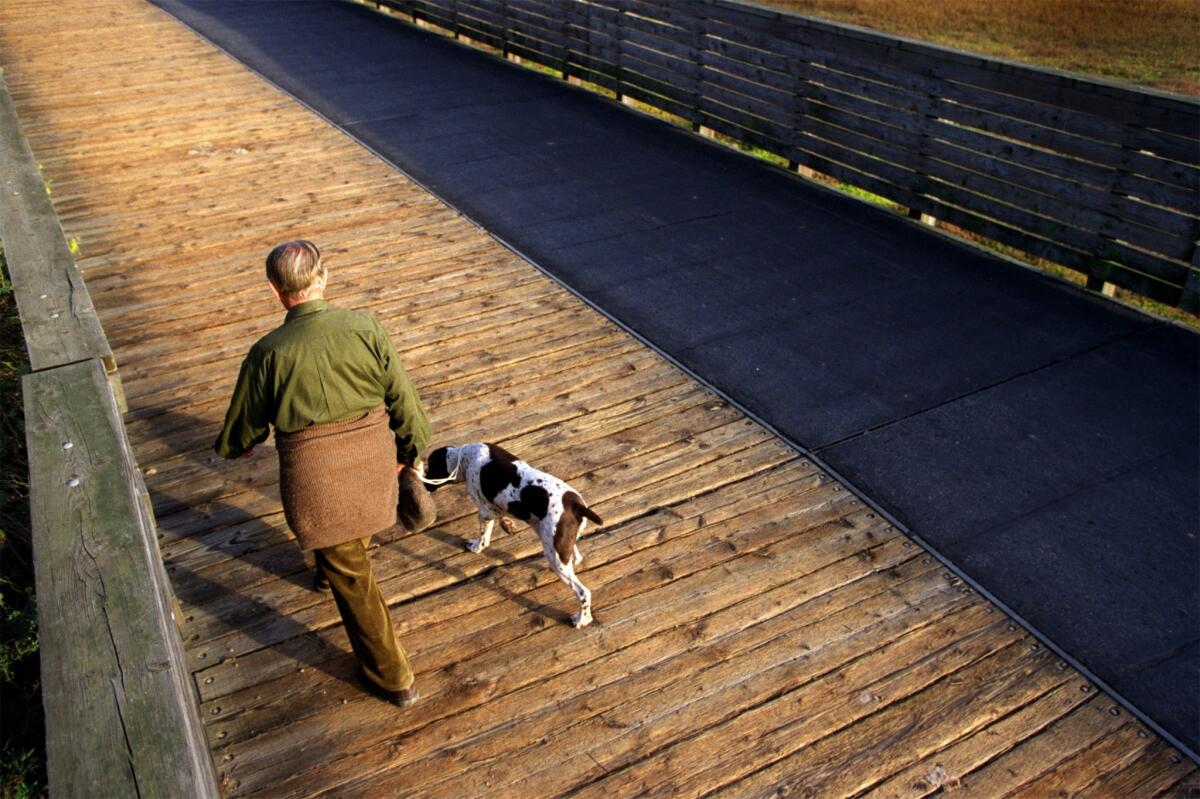Walk now to walk through arthritis later

Feeling achy? Got creaky knees? Joint pain from osteoarthritis? They’ve got a new drug for that that and it’s completely free: walking.
Scientists say taking as few as 6,000 steps per day may help older adults remain active in their golden years.
While it may seem counterintuitive to move more when moving hurts, the new study suggests about one hour of walking per day, at an average pace of 100 steps per minute, may be the perfect dose to ward off the debilitating effects of osteoarthritis.
The disease is the most common form of arthritis; it afflicts more than 14% of adults over 25 and more than a third of those over 65, according to the US Centers for Disease Control and Prevention. It creeps into many parts of the body, but most commonly affects the knees. Simply growing old puts this joint at risk, but being a woman, being overweight, or having a previous injury doesn’t help either.
“Currently, there are no cures for osteoarthritis,” said Daniel White, an assistant professor of physical therapy at Boston University. “And there’s no real cure for the pain.” All doctors can do is try to prevent patients’ symptoms from progressing past pain to paralysis, White said. Otherwise, osteoarthritis can make it hard to accomplish basic tasks like rising from the dinner table or getting out of bed.
So White and colleagues set out to determine if the benefits of exercise could be achieved not just through regimented exercise programs, but through unstructured activities around the home and office. To do this, they used pedometers similar to the now ubiquitous Nike FitBit or Jawbone UP to tally participants’ daily steps. The researchers published their findings last week in the journal Arthritis Care & Research.
“I thought, heck, we have numbers for everything else — cholesterol, blood pressure — why can’t there be a number for the physical activity targets we want to hit?” White said.
For two years, the researchers tracked a group of adults in Alabama and Iowa who ranged in age from 50 to 79. Although some had signs of osteoarthritis at the start, none had problems with everyday activities like going to work, cooking dinner, or walking faster that 2 miles per hour — the speed needed to safely cross a neighborhood street, which scientists used as a cutoff for healthy performance.
Knee problems cropped up in about 150 of the roughly 2,000 participants before the study ended. These people either reported a limited ability to function normally or failed to pass the performance test of walking speed. The researchers also monitored the participants for physiological signs of osteoarthritis such as joint space narrowing or bony growths using knee X-rays.
When they analyzed the step data from the pedometers, they found a strong link between participants’ activity level and knee health. Their results suggest 6,000 steps marks an important threshold: 70% of participants who developed knee impairments walked less than this amount while 70% of those who remained healthy walked more.
This number held true even after the scientists accounted for all the other possible reasons why those who walked less might have developed problems, including age, sex, level of education, and how many physical signs of osteoarthritis they saw in their X-rays at the beginning.
Most adults with arthritis walk only 90 minutes per week, less than 1,500 steps per day. Recognizing this, the scientists also developed intermediate goals for sedentary adults who want to avoid future knee problems. Just 3,000 steps seemed enough to protect most participants in the study, and their chances of remaining healthy improved by about 15% for every additional 1,000 steps they took each day.
“The benefit from walking demonstrated by this paper is good news,” said Dorothy Dunlop, a professor at Northwestern’s Feinberg School of Medicine who was not involved in the study. “Walking is easy to weave into daily routines and requires no membership fees.”
One limitation of the study was that it monitored the normal lives of regular people, complete with all their real-life complications, rather than doing a highly controlled clinical trial, considered the gold standard of medical studies. However, White thinks that’s not a big problem here.
“This is not rocket science,” White said. “The concept’s not surprising.” In fact, the late Robert Butler, founder of the National Institute on Aging, is often quoted as saying, “if exercise could be packaged in a pill, it would be the most prescribed and beneficial medicine in the nation.”
The importance of this study, White said, is that it demonstrates how easy staying healthy can be. “This exercise is not like going to gym and putting on your sweats and sweating away. These are very attainable goals that can be met in the context of daily life by just walking a little bit more.”
For all things science, follow me @ScienceJulia







